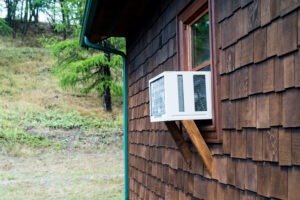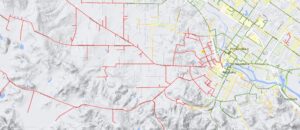Fred Schaefer, a principal on the Distributed Energy Resources (DER) team at Cadeo, is the author of this month’s post on DER forecasting. He and his team honed our planning tool: AdopDER. Read his thoughts on our decision to use open tools for DER forecasting below.
With the increased deployment of distributed energy resources (DER), forecasting DER for distribution system planning has become a critical piece in the planning process to prepare the system for the new energy future. The opportunities that DER technologies bring to shape and shift the electric load only adds to the complexity of planning. To help them make investment decisions, approach the complicated planning process, and prepare the grid for a highly distributable energy future, utilities and regulators need better tools.
Over the past two years, I’ve been fortunate enough to lead the team building Cadeo’s locational DER adoption and load forecasting model (AdopDER). AdopDER addresses many of the issues above. At the start of this journey, the team defined a few core principles for our development work. One of these principles was to use open tools whenever possible rather than developing our own methods for creating modeling assumptions.
Three reasons drove our decision to use open tools:
- Accelerated Progress. As a consultant, I am often called upon to characterize how the markets for specific technologies will evolve over time. Modeling is difficult; it requires a deep knowledge of the subject matter, how the pieces connect, and what drivers contribute to the behavior of the overall system. What makes it even more difficult for nascent technologies, like transportation electrification or behind-the-meter storage, is that we are so early in the adoption curve that building sufficient subject matter expertise and collecting enough data about current and historic trends is both time and cost prohibitive. For these reasons, the choice to use other, open tools rather than develop our own is intentional; I make it so that my projects can produce better results.
- Transparent Methods. Cadeo typically provides a lot of detail in our forecasting work—documenting our methodology, data sources, and assumptions and providing summaries of results from many different angles. We do this to demonstrate that we have thought about the problem holistically, that we’re using the best available data, and that our work does not have methodological flaws. By using open tools that have already been vetted in the public sphere, I can comfortably reference these well-documented approaches. I can also explain how we have used these approaches in the context of the specific problem and specific location rather than needing to build that trust from the bottom-up.
- Using a Collaborative Approach. Battling climate change through decarbonization is an all-hands-on-deck movement and moving forward as a community is the most effective approach. The open-source software development community embraces this philosophy. Even if the tools we use do not have formal open-source licenses, the principles of collaboration and innovation are certainly beneficial. Proprietary data and walled-off approaches only create friction when informing decarbonization strategies.
The decision to use open tools in our own work created space for us to focus on other challenging problems in the development of a unique forecasting tool set in a short amount of time. Selfishly, I’d love for you to reach out to us so that I can tell you more about our great work, but even if that doesn’t happen, I would at least encourage you to consider a more open and collaborative journey toward decarbonizing our planet.
In case you’re wondering, the list of the tools we used to develop modeling assumptions for AdopDER includes:
- DGEN. NREL’s agent-based market model that simulates the adoption of solar and storage technologies.
- ResStock and ComStock. NREL’s tools for developing end-use 8760 hourly load profiles and characterizing national building stock.
- ReOpt. NREL’s tool for sizing and optimizing the dispatch of microgrids.
- PVWatts. NREL’s tool for estimating rooftop solar production.
- CalTRACK. A set of methods for modeling weather- and calendar-sensitive hourly energy consumption.
You can read more about AdopDER and its use cases here.







